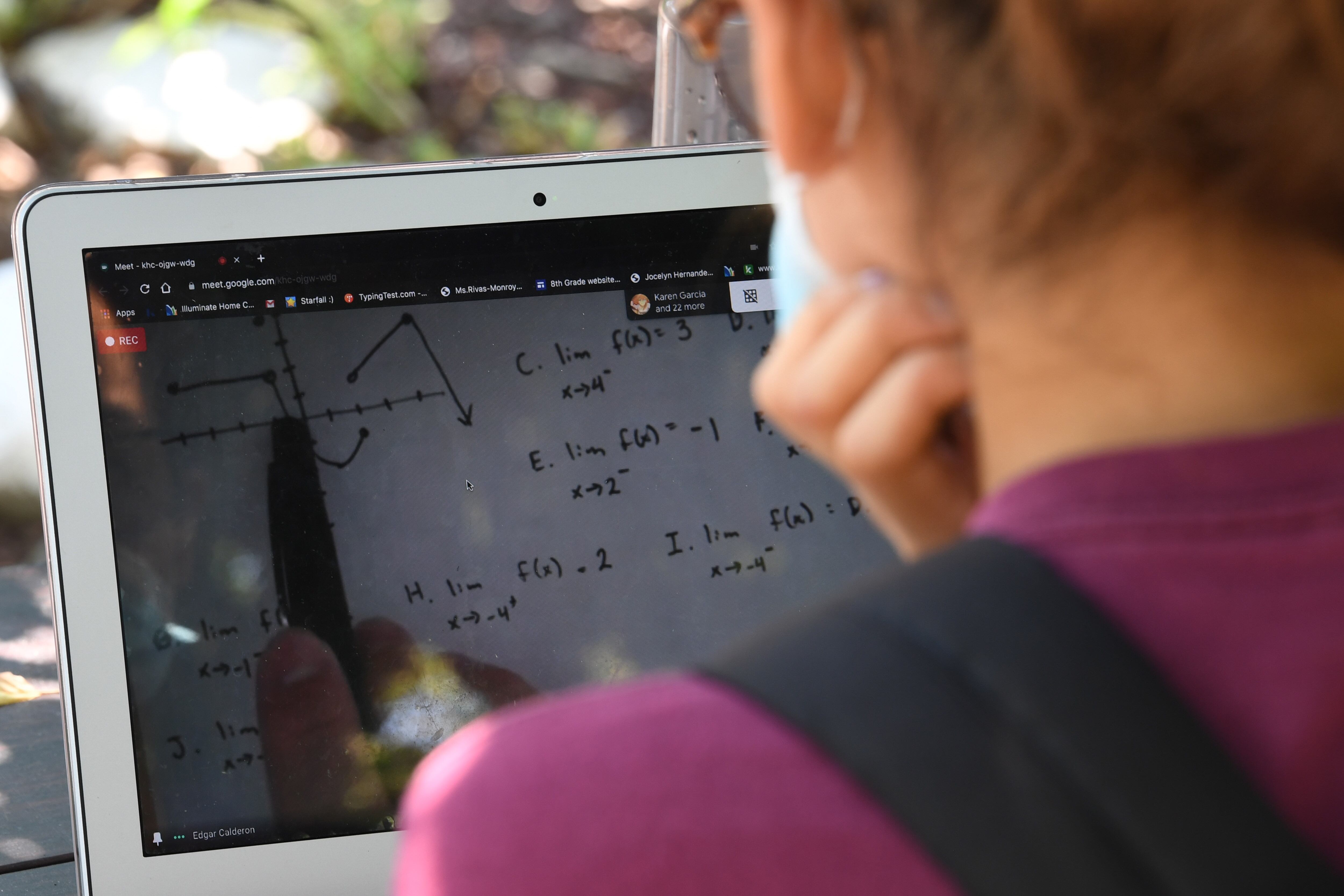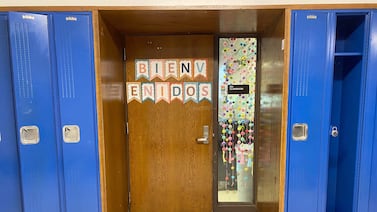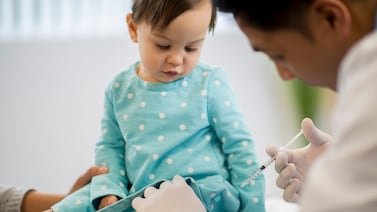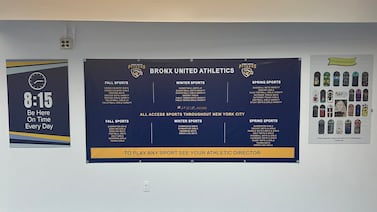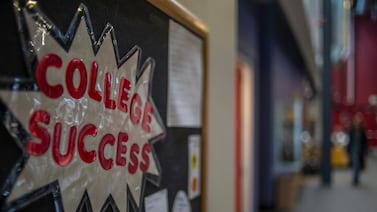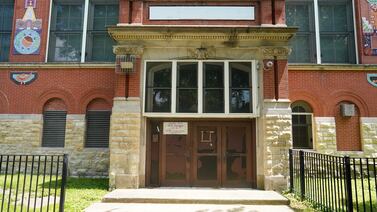Chicago children will log onto their e-learning classrooms Tuesday, kicking off a school year where Chromebooks and iPads are as essential as pencils, and a new learning lexicon includes the phrases “chat box” and “Google Meets.”
District leaders have promised a better remote learning experience this fall, and educators have sent a flurry of communications to families about what to expect as the school year starts. But given the stress of the pandemic, the limited time to plan, the city’s persistent issues with technology and internet access, and the six-hour school day that families must now largely oversee, uncertainty abounds.
Here are some of the issues that Chalkbeat Chicago will be watching:
- What does virtual learning look like, and will it go better than spring?
After a spring that brought the sudden closure of schools and a harried deployment of remote learning, district leaders pledged that the fall would go more smoothly. “We know it was incredibly challenging for families. I personally at the end felt like I completed fifth grade and eighth grade with my kids,” said Janice Jackson, the schools chief, in late July. “There were a lot of lessons learned that we’re using in order to make sure we have a stronger remote learning program in the fall.”
Among those lessons: more consistency across schools. Chicago now requires a minimum number of minutes for live instruction — around 3 hours for many ages, with a total day spanning 6 hours — and it asks teachers to lean heavily on the Google Classroom suite in hopes of making the log-in process easier and providing a more consistent baseline for tracking participation and attendance.
But much of the responsibility of delivering more consistent and quality instruction falls on individual teachers. And while many teachers have said they’ve spent time this summer reevaluating their online lessons, they generally felt underwhelmed by district-wide efforts to train them for remote instruction, according to an August survey by Chalkbeat Chicago. Statewide, 1 in 4 educators told us that they’d paid for their own training out of pocket to improve their practice, and 2 in 5 said they hadn’t received any training.
The city’s teachers’ union will be paying close attention. How much pressure it will put on the district to revise plans — particularly if parents express dissatisfaction with the length of the school day — will be something to watch.
2. How will the city reach its most vulnerable students?
Participation rates climbed higher and higher throughout the spring, with a spike after Chicago introduced a new grading policy in May. But while some students logged on late — something schools still considered a success — others never logged on at all.
By late May, the district had released data that showed 2,332 students in Chicago across 251 schools were considered out of touch with their schools. (It later revised those numbers to 559 students, just a fraction of the original figure.)
The responsibility for finding students largely fell on individual schools, which scrambled to find new methods of outreach and student tracking, even as they tried to engage students in remote learning.
And even when schools were in touch with students, not all families had regular access to devices or home internet. This summer, the district laid out a plan to connect 100,000 low-income families to free internet, saying it will lean on more than 30 community organizations to assist with outreach.
Jackson said Friday that the district was making a “pretty aggressive effort” to reach out to missing students from spring and that it was deploying additional staff to do so, from security officers to staffers in its community engagement office. Tuesday’s attendance count would be crucial, she said.
Students who miss the first day of school will be contacted, she pledged, and the district is working on a process to follow up with families. “We will knock on doors,” she said, stressing that reaching the city’s youngest learners would be among the priorities, after data from other districts showed troubling enrollment declines among younger children.
Chicago schools also are doubling-down on efforts to provide free meals, expanding sites this fall after handing out more than 21 million meals to date. But district leaders have said they can’t alone meet the needs of the city’s most vulnerable children and need community organizations and other outside groups to lend aid.
3. How will schools address trauma and stress?
Educators will have to address students’ feelings about the havoc caused by a pandemic that has hit Black and Latino neighborhoods in Chicago the hardest, as well as their questions about nationwide protests of police brutality toward Black people. Schools have been told to put students’ mental health needs first, but what that looks like in practice will likely vary widely. Chicago has steered educators toward a lengthy set of pandemic-era recommendations from the nonprofit group CASEL, and in the days leading up to school, teachers have traded ideas about how to support students in the first weeks of school.
The 53-page document from CASEL recommends that educators focus on four main areas, including building relationships between schools and families and supporting teachers.
4. Will Chicago roll out a child care plan?
Mayor Lori Lightfoot said in August that the city was working on a plan to assist families with child care and was looking closely at how parks and libraries could help. But it did not have a full plan in place before school started: The district said it would open six “supervision” sites for families most in-need starting Tuesday, and it hoped to have a more detailed set of options soon. “We are planning on adding more supervision sites to meet the needs of our families, and we will share additional information as soon as possible,” the district said in an e-mail to families late last week.
Meanwhile, the YMCA of Metropolitan Chicago is offering remote learning supervision at multiple locations, and several other community organizations are trying to put together day camps and other options for working families.
In New York, city officials have promised a program that will serve up to 100,000 families, and they’ve even given it a name: Learning Bridges. But families — and providers — are still waiting on specific details. The start of school has been delayed there to later this month.
5. Can Chicago better support its special education students?
At the start of the school closure, districts were unsure how to provide services to students in special education, and some district leaders pushed for flexibility under federal law. In Chicago, students with special needs were left out of remote learning for a month, and some were unable to access crucial services like speech-language pathology and occupational therapy until May. Other families didn’t receive services for the rest of the school year.
Parents started to see their children regress.
In the spring, Jessica Burnett saw her 8-year-old son, Jack, struggling to say words with “th” and other sounds, while losing his confidence to write.
“Not only has it impacted his abilities in writing but, most importantly, his willingness to write. He sees himself as being behind and that makes him less likely to attempt it,” Burnett said. “Without speech therapy, it is really affecting his ability to formulate the sounds for words, which has made reading more difficult.”
This school year, families wonder how students will be able to make up for lost learning and access essential services for their children. Education Secretary Betsy DeVos said in the spring that she would not recommend waiving parts of the federal law that guarantees students with special needs a free and appropriate education, leaving school districts open to legal action from parents. While it may take time to process cases, it could ultimately prove an avenue that parents can use to hold the district accountable.
6. Will efforts to bridge the digital divide pay off?
At a price of $30 million through July, Chicago’s push to get technology to students was a herculean lift, with flurries of purchase orders and distribution of more than 120,000 devices to date, followed by the announcement of a $50 million broadband access plan called Chicago Connected late in the summer.
The goal to sign up 100,000 low-income families for high-quality Internet is an ambitious one. As of the end of last week, only a fraction — 22,000 students — had signed up, with the start of the school year looming.
7. When can schools reopen safely?
After saying for much of the summer that Chicago would stick to a fall plan that involved some in-person learning, the mayor and schools chief changed course in early August. Chicago ultimately said the first quarter will be all remote and that the aim will be to move toward a hybrid model with some in-person learning by the start of the second quarter in November.
At the time, the city’s top health official, Allison Arwady, said that officials were troubled by a new case count that was inching close to 400 per day, and that a safer figure would be fewer than 200 cases a day. An all-remote start would give officials an opportunity to “learn” from other school districts where children were entering buildings, she said.
As of Sept. 1, the state board reported that 30.6% of schools will go remote, 41.6% will have blended learning and 27.7% will have full in-person instruction.
8. How will families cope? And will parents ultimately support a six-hour virtual school day?
Anxious 4 a.m. wakeups. Frantic outreach to grandparents, older siblings, and community listservs for tutors and playgroups. The six-hour school day has put many families into a tailspin, as working parents lament how they will monitor their own children and maintain their jobs.
Claudia Hernandez is a family services coordinator at El Hogar Del Nino, a community child care organization in Little Village. She’s also the parent of a kindergartner in Berwyn South, a school district just west of Chicago. Two weeks ago, her son started e-learning in a dual language program, and that ushered in the most stressful 10 days of her life.
“My child care is limited. My mom went back to work, I’m working, my husband is working,” said Hernandez, who ultimately hired a cousin to help her so she can physically go to work three days a week. The other two days, when she’s at home, are a gauntlet. “The meetings don’t stop, or a (work) emergency occurs, or someone needs to check in — sometimes it’s in the middle of when I’m with my son, so I have to step out of the room from him. Sometimes my little one acts up on it and he’s not paying attention.”
She said her son’s teacher pointed out a difference in behavior in the days she’s home with him — it’s worse. That didn’t feel like encouraging news. “She was able to tell that I’m struggling.” She paused. “It is true, I am struggling.”
Berwyn South has said it could reopen buildings in a few weeks, so there is a silver lining. And because of her job working with families with young children, most of whom live in the city and are working parents, Hernandez knows she isn’t alone. “People feel very frustrated and hopeless, and families are venting that they need a support system,” she said. “No one knows what to expect, because every day is different.”
Yana Kunichoff and Samantha Smylie contributed reporting.


